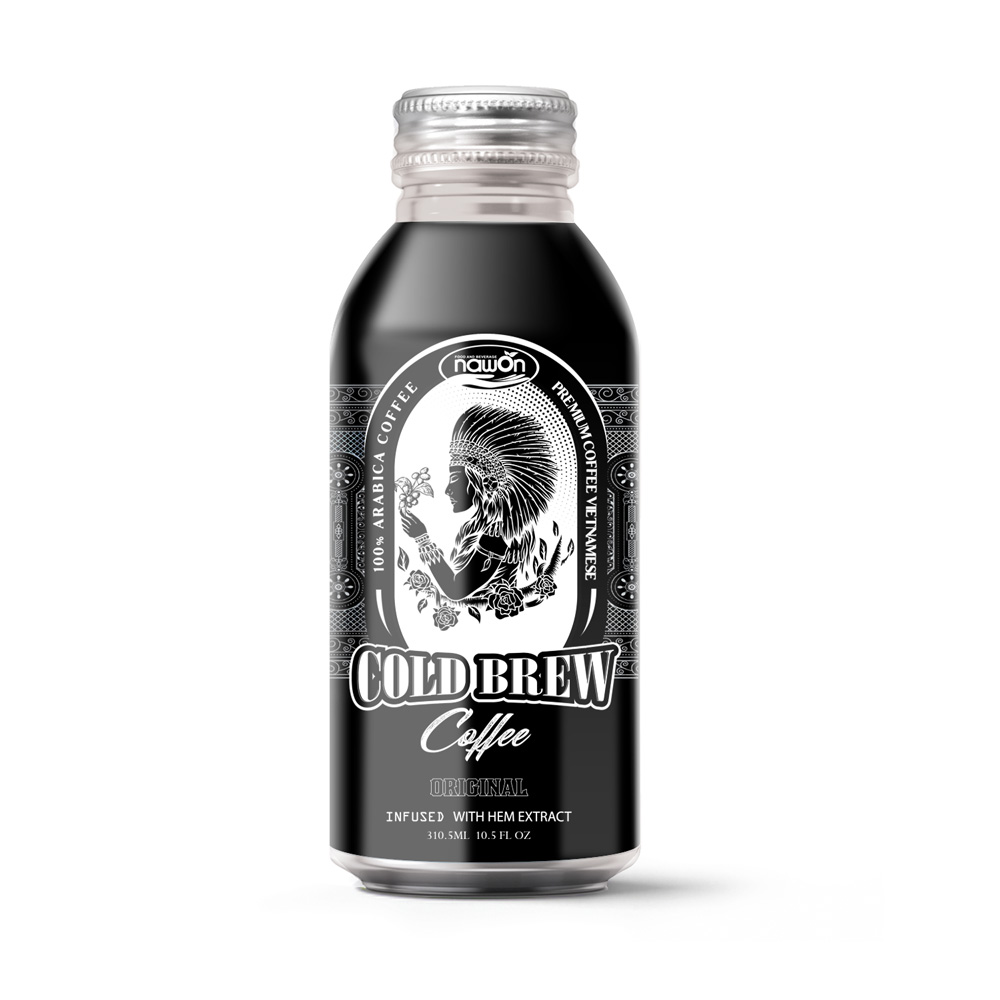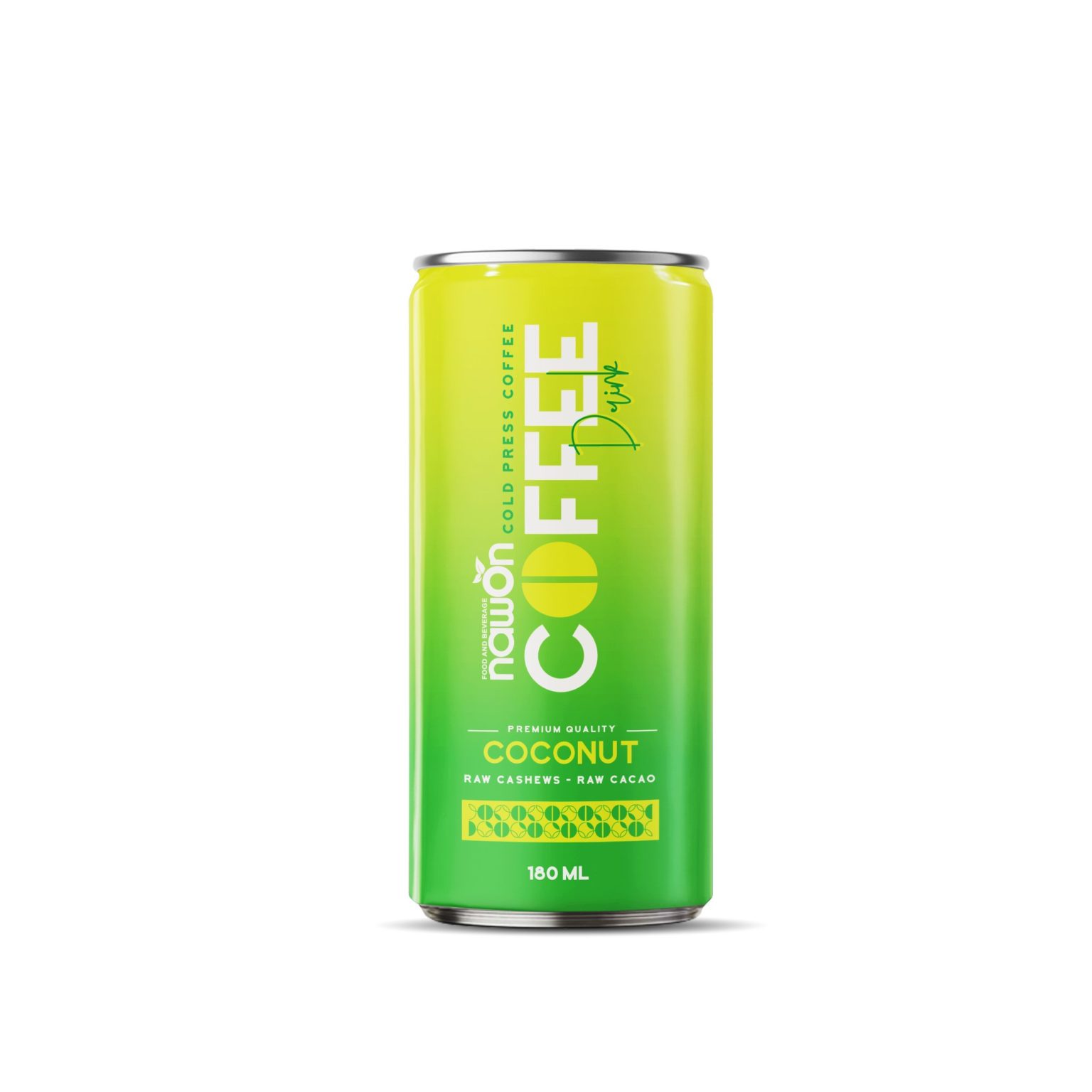On our planet, no country does not consume coffee from Asia, Europe, and the continent on the other side of the hemisphere. Among them, European countries have the highest coffee consumption per capita worldwide (Statista, 2020) but the true coffee origin is not Europe.
We drink coffee every day without knowing that coffee drink has a long history. In this article, let’s explore with Nawon the history of coffee, its origin, and how people discovered this classic drink.
The most popular tale about the origin of coffee
The country where the first wild coffee plant was discovered was probably Kefa – today is Kaffa, Ethiopia. A story passed down orally to this day about the coffee trees here is that around 850 AD, there was an Arab goat herder named Kaldi. After watching his goats eat branches with white flowers and green and red fruits, they run and run tirelessly until late at night. He tried it and reported it to the village monks. The monks went to the area where the goats grazed and found the wild coffee tree, which had dark green leaves and red fruits that looked like cherries. They pressed coffee to drink water, and as expected, their prayer lasted longer than usual, and everyone was excited about this wonderful discovery.
The stimulant effect of coffee helped it quickly become popular to the point that Muslim authorities feared it caused a feeling of excessive excitement; today, we call it the phenomenon of caffeine intoxication, so coffee Use is prohibited. Some people also believe that coffee is the devil’s drink. However, its appeal makes people irresistible. The spread of coffee in Arabia and neighboring countries laid the foundation for a new culture, the coffee culture, and later cafes.
In some areas of Kaffa and Sidamo, there has been a tradition of drinking coffee with grated butter. They add melted ghee to brewed coffee to add flavor, make it nutritious, and soften the bitterness of the coffee (thespruceeats.com, 2021).
Around the 10th century, some indigenous Ethiopian tribes ate coffee mixed with liquid soup for breakfast and lunch. Gradually, the consumption of coffee decreased, and coffee beans became more known for being created for use as a drink. Coffee cherries were fermented into a type of wine by some tribes, while others roasted, ground, and boiled coffee beans into a decoction (thespruceeats.com, 2021).
The habit of making coffee became the most popular form, and it spread to many other places. When it spread to the Islamic world in the 13th century, coffee was brewed stronger and stronger, similar to herbal decoctions. In this form, it is revered as a medicine and prayer to strengthen people.
In traditional Ethiopian coffee preparation, coffee beans are placed in a large iron pan and roasted, then crushed or put in a mortar. It is then mixed with sugar in a jar called a jebena (a type of jar with a slim neck and handle), cooked and poured into a bowl (UCL.ac. UK).
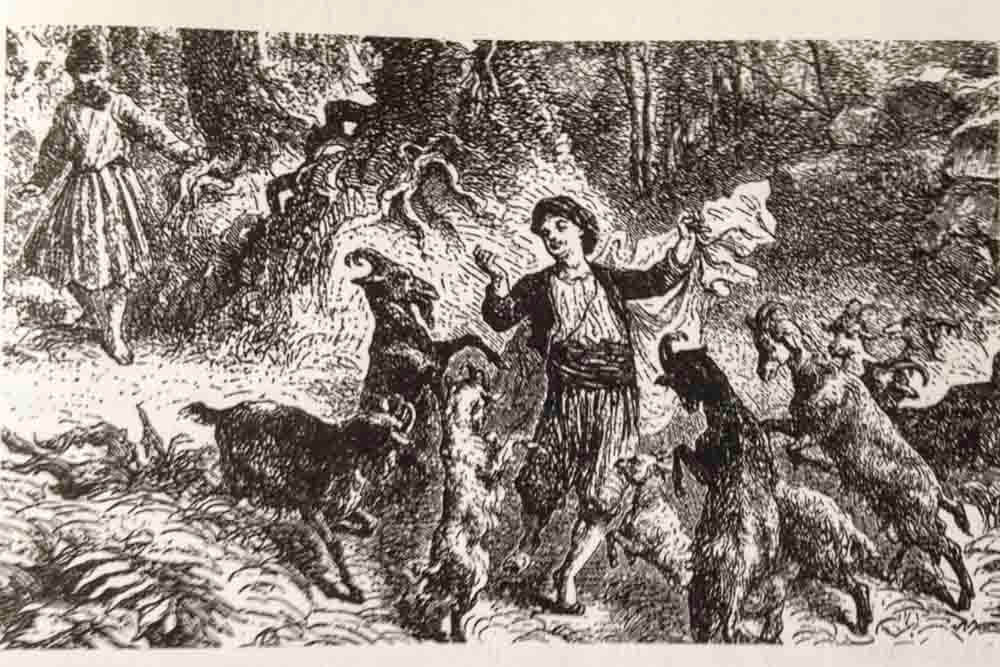
The modern scientific hypotheses
In his book All about Coffee (1922), William H. Ukers stated that authorities agree that the coffee plant is native to Abyssinia (originating as the Kingdom of Axum – 1st to 19th century AD). Eighth and 12th centuries was the Kingdom of Zagwe, and the 13th century was the Kingdom of Abyssinia, In the late 20th century, it completely transformed into the Ethiopian empire (worldhistory.org).
In the ninth century, an Arab physician put forth the uses and properties of coffee beans in the form of basic science. In addition, in Historia Ethiopica, Ludolphus (1681) pointed out that the Abyssinians (originating from Arabia) brought coffee plants to Ethiopia in early times. Therefore, the Arabs must be recognized as the first people to spread the coffee plant, even though it was later discovered in Abyssinia (Ethiopia) and brought to Yemen from there.
Another theory, some authorities believe, is that the first coffee cultivation in Yemen dates back to 575 AD when the Persian invasion ended Ethiopian rule over the black people of Caleb, who conquered the country in 525 (William, 1922).
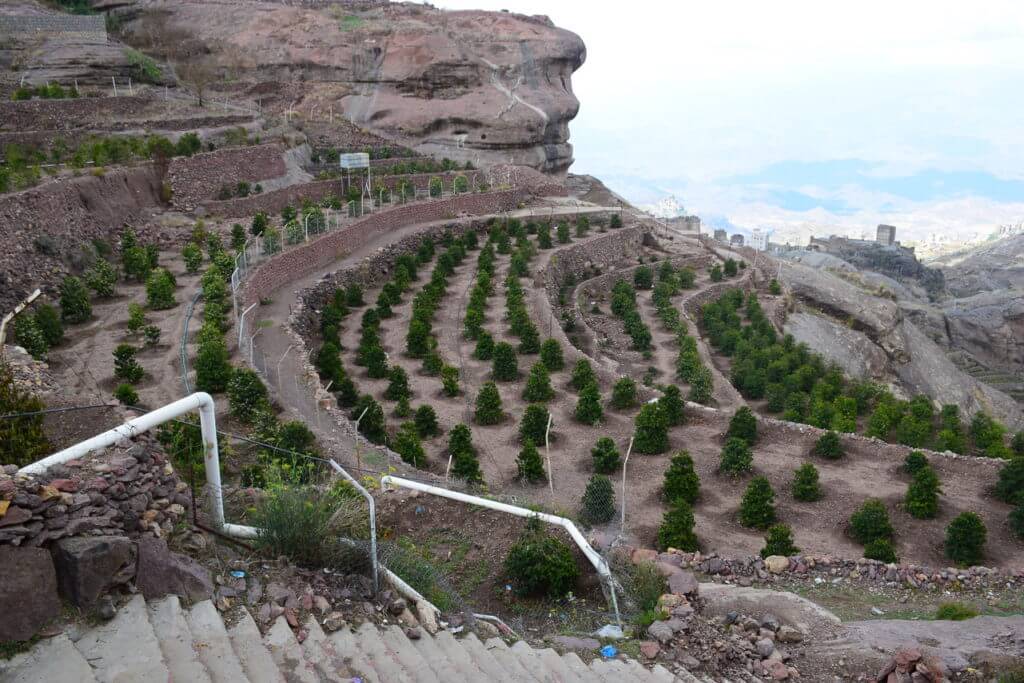
Read more: What Is Instant Coffee – Is Instant Coffee Bad For Health
Modern historical period
In the 14th century, slave traders transported coffee from Ethiopia to Arab countries, sparking trade at the coffee trading center of Mocha (Mokka), named after the city of Al Mukha in Yemen.
Although coffee offered unique benefits as a beverage, its cultivation progressed slowly. It was not until the 15th and 16th centuries that coffee cultivation gained momentum in the Arab world, particularly in the Yemeni region. To prevent the successful spread of coffee cultivation, Arabs attempted to hinder its proliferation by soaking the beans in boiling water or drying them, preventing germination when taken beyond their borders.
According to Indian tradition, around the year 1600 (some authoritative sources suggest 1695).
The descendants of these initial coffee plants were found growing under the canopy of indigenous trees for centuries. Many plant varieties cultivated by the native people in Kurg and Mysore were seemingly traced back to the seeds brought by Baba Budan. It was not until 1840 that the British seriously considered officially starting coffee cultivation and export in India. Present-day plantations stretch from the northernmost reaches of Mysore to Tuticorin, with the largest cultivation areas in Karnataka, Kerala, and Tamilnadu (All about coffee, 1922, and the Indian Ministry of Agriculture).
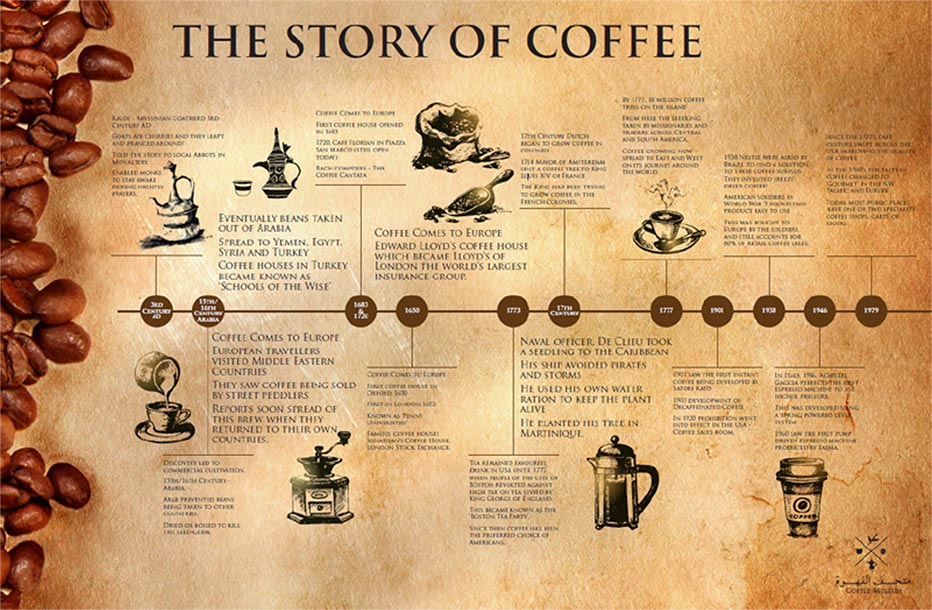
Read more: Vietnamese Egg Coffee – The Tasty Drink And Dessert All In 1
Journey to Europe
In 1517, coffee made its appearance in Constantinople (Istanbul, Turkey). While coffee had been known in Constantinople (the capital of the Roman Empire from 330 to 395, now Istanbul) since 1517, it was not was not until 1554 that residents became familiar with coffee environments, thanks to the opening of the first coffee shops. During the reign of Suleiman the Magnificent, son of Selim I, a Schemsi from Damascus and a Hekem from Aleppo, it opened the first two coffee shops in the Taktacalah neighborhood.
Sometime later, Rauwolf, a renowned medical doctor and botanist from Augsburg, mentioned coffee in print for the first time in Chapter VIII of Rauwolf’s Travels, published in German in 1582–83.
The Significance of Coffee in the Ottoman Empire (Turkey) in 1540
Coffee appeared in the Ottoman Empire around 1540, with historical documents noting that coffee was introduced by Özdemir Pasha, the Ottoman governor of Yemen, who recognized the unique qualities of the beverage. Özdemir Pasha presented coffee to Suleyman the Magnificent (reigning from 1520 to 1566), who developed a liking for it to the extent that the staff of Topkapi Palace decided to adopt a new coffee brewing method. The era of Suleyman marked a true breakthrough in the history of coffee in Turkey during the Ottoman period. The citizens in the Ottoman palace took coffee beans, ground them finely, and boiled them in a special pot, creating a new beverage that impressed Sultan Suleiman the Magnificent and his wife, Hurrem Sultan.
In 1544, two Arabs from Syria opened the first coffee shop in Istanbul. Around the same time, Sheikh Bostanzadeh Mehmed Effendi issued a proclamation stating that coffee was not prohibited but a beneficial beverage.
The First Coffeehouse in Venice, Italy, in 1645
While there is no specific timeline for the spread of coffee from Constantinople to Western Europe, it is likely that the Venetians, due to their proximity and strong trade with the Levant (a large conventionally defined region in Western Asia), were among the first to encounter it.
Prospero Alpini, a physician and botanist from Padua (now Padova), visited Egypt in 1580 and brought back news of coffee. He was the first to describe the coffee plant and beverage in his treatise “The Plants of Egypt,” written in Latin and published in Venice in 1592.
In 1645, the first “coffee shop” was officially opened in San Marco Square, Venice. It became so successful that a century later, the Venetian government had to suspend licenses because there were over two hundred such establishments in the town. This marked the beginning of coffee’s popularity in the region, and soon, coffee shops appeared in many Italian towns, including Naples, Rome, Milan, Turin, Florence, and Genoa.
The First Coffee Shop in Oxford (1650) and London (1652), United Kingdom
The first coffee shop in England opened in Oxford in 1650. Two years later, a Greek servant named Pasqua Rosee brought this novel drink to the capital, London, opening a shop in St Michael’s Alley, Cornhill. It was a success shortly after, and others quickly copied it to sell this addictive beverage. Before, men used to gather in taverns for business and exchange of ideas. However, they were often uncomfortable, noisy, and inefficient due to beer and spirits. On the contrary, coffee would ward off sleepiness in a suitable space for business discussions.
Paris, France (1671)
Although in 1944, a traveler named Pierre de La Roque was the first to introduce a few coffee beans to Marseille, officially, coffee was first recognized in Paris in 1669 by Suleyman Aga, the Ottoman Empire’s ambassador during the reign of King Louis XIV of France. Aga, sent by Mohammed IV, brought coffee bags with him and described it as a wonderfully refreshing beverage when mixed with a small amount of cloves, cardamom seeds, and sugar. Two years later, in 1671, an Armenian named Pascal opened a coffee stall at the St. Germain fair. He sold drinks from a tent, supplemented by the service of Turkish boys serving drinks in the crowd with small cups.
Vienna, Austria (1683)
The cultural history of Vienna’s coffeehouses is linked to the end of the Siege of Vienna in 1683. The Austrians successfully repelled the Turkish invaders and confiscated 500 bags of coffee as spoils of war. Legend has it that Viennese citizen Georg Franz Kolschitzky (1640 – 1694) was the first to obtain a license to serve coffee in the city after his heroic actions during the siege. A street in Vienna’s 4th district is named after him, and a statue is placed at the corner of Favoritenstraße / Kolschitzkygasse. However, the first coffeehouse in Vienna was opened by an Armenian spy named Johannes-Diodato-Park in Wieden, Vienna’s 4th district. He served at the Imperial court and was a secretive man with a unique coffee brewing method from his homeland.
Germany (1673)
Coffee entered Germany around 1670, appearing at the Brandenburg court in 1675. The first appearance of coffee in northern Germany was from London, where an English merchant opened the first coffee shop in Hamburg in 1679–80. Regensburg followed in 1689, Leipzig in 1694, Nuremberg in 1696, Stuttgart in 1712, Augsburg in 1713, and Berlin in 1721.
New World
1771: Instant coffee was first invented in the UK. Instant coffee first began as a ‘coffee compound’. In the 20th century, instant coffee finally found its market. In 1890, New Zealander David Stang developed a ‘soluble instant coffee’, followed by the Chicago chemist Satori Kato in 1901.
1773: Coffee became a part of American culture alongside blue jeans and rock-n-roll. The British brought coffee to the New World in the mid-17th century. Coffee shops became popular, but it wasn’t until the Boston Tea Party in 1773 that American coffee culture was permanently changed: the rebellion against King George III created a shift from tea to coffee among the colonists.
1882: The first Espresso coffee machine was invented in France by Louis Bernard Rabaut, although it was a very basic design. By 1901, Luigi Bezzera, a mechanic in Italy, was granted a patent for the first commercial espresso coffee machine, titled “Improvements in machinery for making and serving instantaneously a beverage such as coffee.”
1850: A French Catholic introduced coffee to Vietnam, first planted in the church courtyard in 1857. From there, coffee began to grow in the country, becoming the world’s second-largest exporter.
Development of Cappuccino
Cappuccino coffee gradually conquered the world, marking a global revolution in coffee. Its creator was a Capuchin friar named Father Marco d’Aviano.
In September 1683, this friar arrived in Vienna and requested to adjust the taste of coffee by adding milk, as it was initially too strong. The color of the Capuchin monks’ robes resembled the perfect brown color of a cappuccino coffee cup. From then on, the name cappuccino was given to the coffee and milk beverages to reduce the strength of pure coffee.
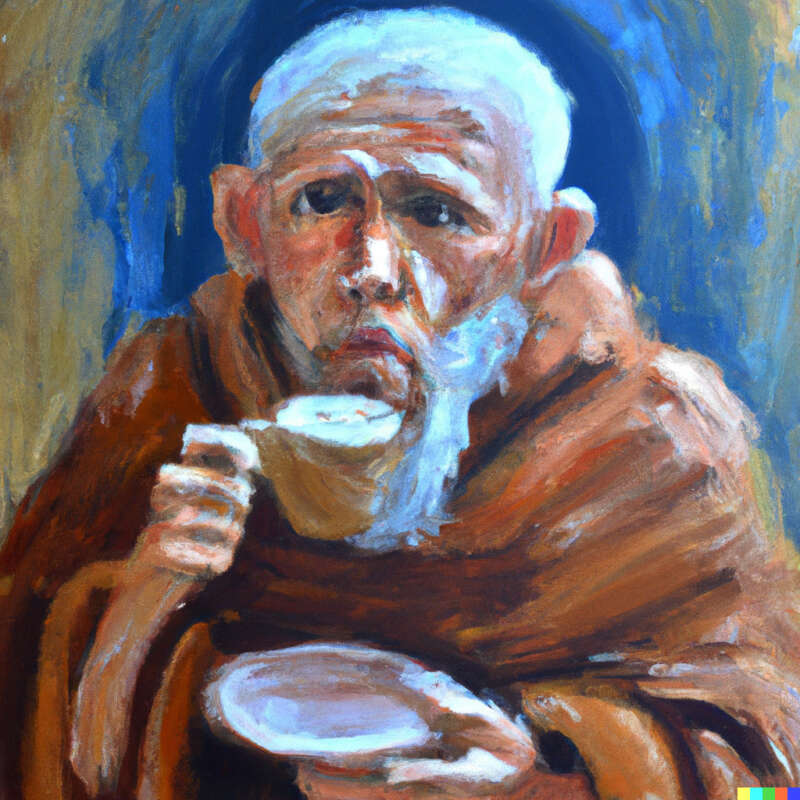
Read more: What Is The Difference Between Espresso Vs Coffee?
The evolution of cappuccino
The enchanting realm of cappuccino slowly captivates coffee enthusiasts worldwide. This marks a global coffee revolution, with its origin attributed to a Capuchin friar named Father Marco d’Aviano.
In September 1683, Father Marco embarked on a mission in Vienna, urging a transformation in the flavor of coffee by adding milk. Initially too robust, the beverage’s hue resembled the brown robes of the friars, giving birth to the name “cappuccino” for this coffee and milk concoction, moderating the intensity of pure coffee (Wikipedia.com).
Explore The Taste Of Coffee Drink
Continuel
Plantations across the globe
As the demand for beverages expands, fierce competition arises in cultivating coffee beyond the Arab world. In the late 17th century, the Dutch obtained coffee saplings, facing initial failure in their attempts in India. However, success awaited them in Batavia, Java (present-day Indonesia), renowned for coffee in Asia. These robust plants quickly led the Dutch to trade coffee efficiently. They expanded coffee cultivation to Sumatra and Celebes.
Arrival in the Americas
In 1714, the Mayor of Amsterdam presented a young coffee plant to King Louis XIV of France. The king ordered its cultivation in the Royal Botanical Gardens in Paris. In 1723, a young naval officer named Gabriel de Clieu obtained a seedling from the royal plant. Despite a perilous journey—harsh weather, sabotage attempts, and a pirate attack—he safely transported it to Martinique, an island in the Caribbean.
After cultivation, the plant not only thrived but also multiplied into over 18 million coffee trees in Martinique in the following 50 years. Remarkably, this seedling became the origin of all coffee plants across the Caribbean, South, and Central America.
It is believed that coffee reached Brazil in 1727 from French Guiana through Portuguese Lieutenant Francisco del Melo Palheta. He successfully persuaded the governor of Guiana’s wife to assist in smuggling seeds across the border. This marked the beginning of Brazil’s eventual dominance as the world’s top coffee exporter.
Coffee farm brazil
Initially consumed locally by European colonists, Brazilian coffee gained popularity as demand surged in Europe and the United States, leading to increased exports. By 1820, Brazil produced 30% of the world’s coffee. From there, coffee cultivation expanded to other countries like Guatemala, Mexico, and Panama…
Around the mid to late 1800s, diseases devastated the coffee industry in Asia, providing significant opportunities for Central and South America to become the coffee production centers of the world. In the 1910s, Brazil was responsible for 80% of the world’s coffee production. By the late 18th century, coffee had become one of the most sought-after export crops globally. As other producing nations recovered slowly, this ratio decreased, but Brazil never lost its position as the world’s leading coffee producer. During that era, after crude oil, coffee was the most sought-after commodity globally.
Vietnamese coffee
The French introduction of coffee to Vietnam officially began in 1857, originating from the Martinique archipelago and the Guiana region of French Latin America. Similar tropical climate and soil conditions influenced this decision in Vietnam. Initially, Arabica varieties were tested in the northern and central regions (Quang Tri, Bo Trach, etc.). After harvesting, it is processed under the Arabica du Tonkin brand (Northern Arabica coffee) and imported to France. Arabica was tested first because it has a higher value, originates from Ethiopia, and is suitable for growing in plateaus and high mountains with altitudes from 800 to 2,000 meters, and temperatures from 18 to 23 degrees Celsius.
Then, in 1908, the French brought two other types of coffee to Vietnam: Robusta (Coffea canephora) and Exelsa (Coffea exelsa). Not stopping, the French also tested many other similarities with Congo in the Central Highlands and coffee grew very well in this area. During the war and until 1986, many coffee producers in this sector grew but very slowly and with low yields. In 1986, the total area of the country for coffee producers was only about 50,000 hectares and output was 18,400 tons (just over 300,000 60 kg bags).
In the late 1990s Vietnam became the leading coffee producer in Southeast Asia and, after Brazil, the second producer and exporter of green coffee in the world. However, production is mainly focused on Robusta beans. While Robusta accounts for 92.9% of the total coffee-growing area, Arabica varieties are responsible for only a few percent – no more than 5% of Vietnam’s total production.
Coffee production steadily increased by 20%-30% per year during the 1990s, with small coffee gardens planted on half a million plots of land (two to three acres). This has helped strongly turn around the economy. Taking a typical figure, in 1994, the country had about 60% of people living below the poverty line, and currently this number is less than 10%. One thing is for sure: this achievement cannot be ignored. that the coffee tree brings.
Vietnam coffee culture has developed strongly to this day. Creative coffee recipes of Vietnamese people are famous all over the world such as iced milk coffee, egg coffee, butter coffee…

From 1925, following meticulous surveys of climate, and soil, as well as considerations of societal and political factors, the French introduced coffee cultivation for experimentation in the Central Highlands, especially in the Lang Biang plateau (Lam Dong) and Dak Lak (Buon Me Thuot). The plantations were owned by the French, with the workforce mainly consisting of local ethnic people. Arabica was found to be more suitable in Lang Biang, while Robusta thrived in Dak Lak. By 2001, Vietnam officially became the world’s second-largest coffee exporter, contributing over a billion USD annually to the national budget.
From the early 20th century, coffee, as a novel beverage, gradually transitioned from urban to rural areas. The communal and friendly nature of coffee induced alertness, enhancing both physical and mental labor. Coffee shops adapted to individual preferences, offering filtered coffee for each person or using a percolator or immersion brewing for a cost-effective communal approach. Coffee shops became social hubs, serving as activity centers, information hubs, and suitable environments for commercial transactions throughout the day.
Explore The Taste Of Coffee Drink
Continuel
The last sentences
Coffee has earned its status as one of the world’s most consumed beverages, weaving a rich tapestry of cultural, social, and sensory experiences that span the globe.
The rich tapestry of coffee varieties, brewing methods, and regional specialties adds a layer of exploration and discovery for enthusiasts, further fueling its popularity.
Besides, the global coffee industry sustains millions of livelihoods, from farmers cultivating coffee beans in remote regions to baristas crafting artisanal brews in bustling urban centers. This economic interconnectedness underscores the significance of coffee in international trade and local economies.
Coffee’s allure extends beyond its capacity to awaken the senses. It has become a symbol of shared experiences, a catalyst for social interactions, and a versatile beverage that adapts to diverse tastes and preferences. As a result, the comforting aroma of brewing coffee and the ritual of savoring a cup have become universal, transcending geographical boundaries and cultural differences to unite coffee lovers worldwide in their appreciation for this beloved beverage. And the history of coffee will continue to be written into the future.
References:
- Ramalho, J. C. (2002). O cafeteria. Aspectos gerais da sua biologia e cultura. Comunicaçõ es, nº 21, Instituto de Investigação Científica Tropical, Lisboa, p. 44 [in Portuguese].
- Temple, J. L, Bernard, C, Lipshultz, S. E, Czachor, J. D, Westphal, J. A, Mestre, M. A. (2017). The Safety of Ingested Caffeine: A Comprehensive Review. Frontiers in Psychiatry 2017, 8.
- Ukers, W. H. (1922). All about coffee. New York: The Tea and Coffee Trade Journal Company.


















